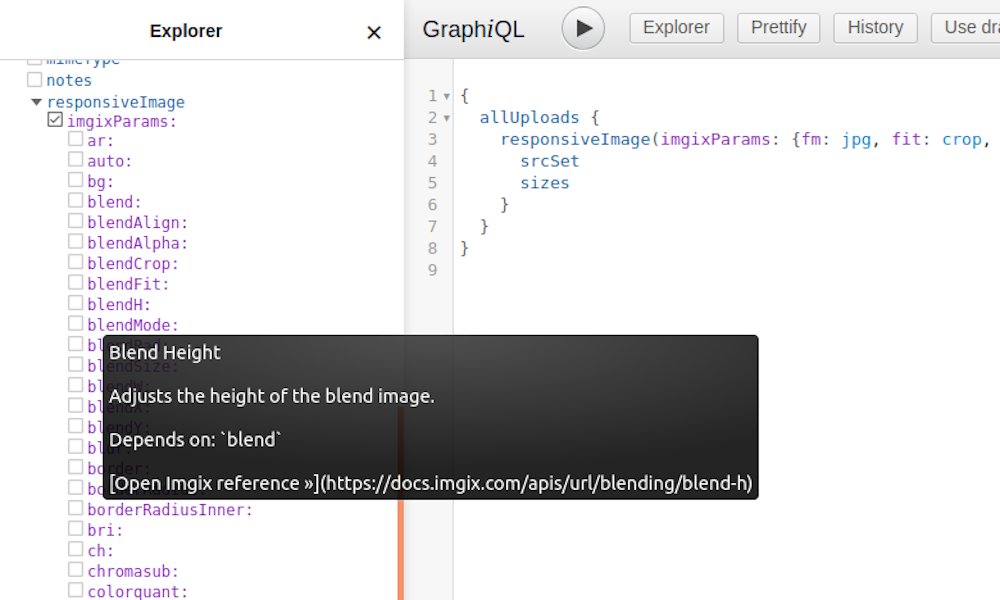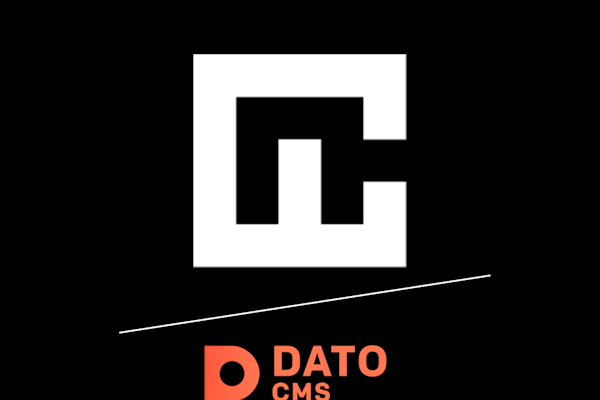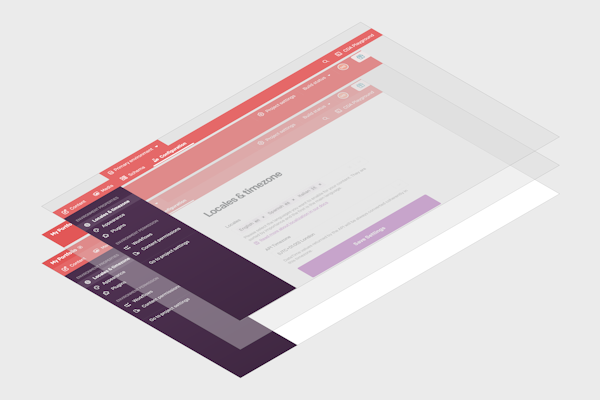wordpress vs datocms
WordPress vs DatoCMS: Which Is Better For Your Needs?
Embracing the right content management tool is critical for the success of your business or idea. WordPress has established itself as the most widely recognized CMS, representing the go-to solution for building standard sites. DatoCMS follows instead a different approach, supporting the creation of tailored and customized user experiences. In this WordPress vs DatoCMS guide, you will understand which CMS better fits your goals.
By comparing their strengths, weaknesses, and unique characteristics, you will learn which tool better fits your needs.
Let's dive in!
Introducing WordPress and DatoCMS
WordPress, also referenced as “WP,” is the world's most popular CMS (Content Management System). In detail, it is an open-source solution that provides content management and website-building capabilities from the same platform. WP enables users with different levels of skills to build a site, from simple blogs to complex e-commerce sites. It supports hundreds of millions of websites on the Internet thanks to its intuitive interface and extensive library of themes and plugins.
DatoCMS is a headless CMS designed to streamline content creation and distribution. It acts as a single source of truth, enabling content to be managed separately from the frontend. Its API-centric and frontend-agnostic nature makes it perfect for building a future-proof, modern, decoupled architecture.
Even though the two tools differ in their approach and focus, they share the purpose of managing and distributing digital content. This is why we can compare them in this WordPress vs DatoCMS article!
Architecture: Monolithic vs. Headless
The monolithic approach to web development involves having an all-in-one application where the frontend and backend are tightly coupled. As a monolithic system, WordPress allows you to handle content management, website building, and content visualization from the same platform.
The headless approach is about decoupling the backend from the frontend. In this scenario, the two systems are separate applications that communicate via API. As a headless solution, DatoCMS only provides content management capabilities and is agnostic about how the frontend developers will present the data.
In general, the monolithic approach makes everything easier. Here is why WordPress is well-known as a quick solution for building and deploying sites. This is especially true if you do not need to build complex or highly customized user experiences. Do not forget that you cannot choose the frontend technology and have to abide by the limitations imposed by the monolithic system.
If you instead have to craft a frontend with custom needs, want to create highly interactive sites, or plan to distribute your content via an omnichannel approach, you should consider a headless approach. Sure, it leads to a longer development time and may introduce communication overheads between teams or agencies. However, its API-centric approach helps you achieve a composable architecture, combining top-notch technologies, services, and products in a flexible technology stack.
Read our monolithic CMS vs headless CMS in-depth comparison article to dig into this topic.
User Interface and Experience
If you are not a developer or want to quickly create a website with a generic or basic UI and UX, WordPress themes can be a lifesaver. Find a theme that fits your design needs, install it, and activate it. That is all you need to do. Then, you can customize the user interface using the built-in visual editor. As you can see, WP is a great solution to get a site up and running without dedicating too much time to development or design.
Unfortunately, there are some limitations to take into account. While themes offer a quick fix, they also come with certain design constraints. Thus, customizing beyond the default options can be challenging. This implies that you need to develop a theme from scratch to achieve a truly unique user experience. The main drawback is that the custom frontend must integrate with WordPress’s PHP functions, which are not the easiest to deal with. Especially when presenting dynamic content or loading data in the browser via AJAX.
With DatoCMS, on the other hand, you always have to develop the frontend from scratch (or almost, thanks to the starter projects). You cannot ship a site as fast as with WordPress, but you are not restricted by the limitations of the pre-made themes or the tool either. You are free to adopt whatever frontend technology you prefer and use it to create websites with tailored, customized, and advanced user experiences.
Let's move on to the next section! There is still a lot to learn in this WordPress vs DatoCMS article!
Scalability: The Power of Content as a Service
As your site grows big, you must scale it to avoid slowdowns and downtimes that might drive users to competitors. Scaling a web platform requires optimizing both the frontend to improve performance and the backend by adding more servers or upgrading server resources to handle increased traffic.
In WordPress, you can make the frontend scalable by adopting caching, best coding practices, and lazy loading of assets. Yet, scalability mainly depends on the backend, particularly on the web and database servers. You could rely on an online hosting service like WP Engine that scales them for you, but their plans are not cheap.
The elephant in the room here is that developers who work with WordPress are usually frontend specialists. This means that they are likely to have little or no experience with server scaling, which is more of a backend task. So, they may struggle to efficiently scale a WP-based application.
In contrast, this is where DatoCMS shines. As a SaaS (Software as a Service) backend service, it manages scalability for you, relying on a highly scalable content management and delivery infrastructure. That is why even Vercel uses it to manage the millions of daily users visiting the Next.js Conf site during the conference. Similarly, HashiCorp produces millions of DatoCMS API calls and terabytes of data traffic per month.
As a developer, you can focus on creating the frontend and user experience, leaving backend scalability and management to the experienced DatoCMS team. You might then consider using the REST API offered natively by WordPress to adopt it as a headless CMS. But keep in mind that WP is self-hosted! Optimizing it to achieve the same level of scalability guaranteed by DatoCMS would be terribly challenging. WordPress vs DatoCMS is more complex than simply setting up WordPress as a headless CMS!
Maintainability
If you have ever used WordPress, you are already aware that updating themes, plugins, or the underlying framework or PHP version could easily break your site. Something can go wrong, to the point that dealing with updates in WP is always scary. No wonder, PHP is the fourth most disliked language in the world. Some plugins also leave traces in the database when removed, which makes it difficult to migrate to alternative solutions. This represents an issue also for most importers, such as DatoCMS's WordPress importer. In short, WordPress maintenance is affected by the technology stack the tool is based on.
One of the main advantages of using a CaaS (Content as a Service) solution like DatoCMS is that you do not need to worry about backend maintenance. The provider keeps the solution up-to-date for you. As for the frontend, the tool is not limited by any specific stack. You can choose the technology that best suits your project's needs, such as a cutting-edge web development framework like Next.js, Nuxt, Remix, Svelte, Gatsby, React, and Vue.js. These are much easier to maintain than PHP.
So, WordPress is good for simple projects or sites that do not require frequent updates. DatoCMS is instead a better choice for developers who want to explore new technologies and for ever-evolving web applications.
Multimedia Handling
The WordPress ecosystem includes various plugins to enhance multimedia content via a CDN (Content Delivery Network). These introduce resource caching, improving network bandwidth usage and page performance, loading time, and responsiveness. But they also come with a fee, as they require you to join external paid services. That may also lead to vendor lock-in, a situation where you become dependent on these services and cannot easily replace them.
DatoCMS takes a more holistic approach to multimedia file management. Specifically, every asset uploaded to the platform is automatically stored on Imgix. That is a super-fast CDN optimized for image delivery that also provides on-the-fly image resizing, conversion, and optimization capabilities.
DatoCMS also offers video and audio optimization functionality via Mux, the leading API-first video infrastructure company in the market. Thanks to this collaboration, you have access to seamless video delivery with adaptive streaming through HLS.
Together with the image, DatoCMS’s Content Delivery API can also return low-quality placeholders based on BlurHash and ThumbHash. Since these are lightweight LQIP images, the page will render them immediately. You can then replace them with the actual images at a later time.

This mechanism allows for better performance and a smoother experience when loading images. To facilitate the implementation of that behavior, special image components are available for React, Vue, and Svelte.
WordPress vs DatoCMS? As for multimedia handling, DatoCMS is a better solution on all fronts. Check out the documentation to see what the headless CMS has to offer for images and videos.
Extensibility via Plugins and Themes
WordPress wields an entire arsenal of plugins and themes. As of this writing, there are more than 50k plugins available for free. These extensions range from fine-tuning the user interface to introducing entirely new features. WP plugins hold the key to optimizing SEO, enforcing security, enriching functionality with seamless integrations, and much more. Similarly, the countless themes available give the ability to completely change the site's appearance and UI with just a few clicks. This dynamic extensibility empowers editors to transform both the content management platform and frontend without any development.
DatoCMS supports plugins as well. They can expand and customize the tool by extending its UI and features, but they are not as powerful as WordPress’. The headless CMS also comes with built-in UI customizability and themes for the editor platform. But since the frontend is not managed by the tool, both plugins and themes cannot affect it. As a result, you always need some development to add a new feature to your application.
Overall, WordPress is king in the realm of plugins and themes. At the same time, DatoCMS plugins limit the scope of actions based on the user role, whereas WP plugins are known to lead to security issues. Let's find out more!
Security
The open-source nature of WordPress and its extensive community support should make it pretty secure. So why is it not usually considered a secure solution?
The great majority of plugins and themes come with backdoors, bugs, and vulnerabilities that open up to attacks. Learn more in WordPress security in-depth article.
As mentioned before, keeping the technology and its plugins up to date is not that easy. Only 48% of WP sites are using the latest version, and that is a huge problem for security.
Here is why WP is known for its security issues and represents the most hacked technology according to Sucuri.
On the contrary, DatoCMS is extremely secure. The vendor keeps it up-to-date for you, addressing known security issues to prevent attackers from harnessing them. This is essential to make the service trusted by users and customers, whether individual developers or enterprise companies. In other terms, DatoCMS must be secure. As long as you follow security best practices and keep updating your dependencies in the frontend, you are reasonably safe. That should not be a problem, since the headless CMS encourages the choice of modern frontend technologies.
Cost
WordPress is free, but it comes with several hidden costs. If you want to use it on a production site, you will likely need premium plugins and themes. To deploy a WP site online, you will also have to purchase a plan from a hosting provider. Overall, that can cost dozens of dollars per month. On large projects, you may end up paying as much as hundreds of dollars monthly. For small or trial sites, the main cost remains the hosting.
The same is true for DatoCMS when used on a free plan. However, note that its limitations do not make it suitable for production projects. For more complex sites and applications, you will need a pro plan. For more information on what is included in these plans, see the DatoCMS pricing page.
WordPress vs. DatoCMS: Final Comment
For simple projects with a common UI and UX, such as a blog, a static site with a few pages, or a basic e-commerce platform, WordPress is the go-to CMS. The above examples represent the vast majority of sites on the Web, so it should come as no surprise that 43.1% of all websites rely on it. Using a headless CMS like DatoCMS for such platforms would only introduce development costs and delays. With WP, you only need to install it in cPanel, choose a theme, and customize your site to meet your needs.
If you instead want to use WordPress in more complex projects, you must master the platform, going beyond the role of a mere installer. To craft bespoke websites that have advanced frontend design and dynamic interactions, you need to dig into its features. This requires in-depth PHP, HTML, CSS3, and JavaScript development skills. Also, it takes time and effort. As you can see, this path is not less demanding than opting for DatoCMS and building a site offering a great UX from scratch.
So, skilled developers can use both CMSs effectively, and both enable the creation of custom, high-quality, rich user experiences. The main difference? DatoCMS is exactly about that, while reaching the same result with WordPress comes at a price in terms of time, effort, and frustration. The reason is that developers would have to deal with PHP, not the best language, and WP limitations. This can easily hinder the development process, leading to disappointing experiences for the end users.
But let's say you are confident that you can get a remarkable result for users even with WordPress. Would developers working on a WP project have a great time, or would they prefer to go Jamstack with DatoCMS? Ask any developer and they will tell you the answer, DatoCMS + Jamstack!
Want to migrate from WordPress to DatoCMS? Take a look at our importer!
Congrats! You now know what CMS to choose between WordPress vs DatoCMS!
Conclusion
In this WordPress vs DatoCMS article, you learned why the two CMSs can be compared and what they have to offer. In particular, you understood what the two tools are about and in which scenarios DatoCMS is a better solution.
You now know:
The difference between a monolithic CMS and a traditional CMS
Why WP helps you ship a site quickly but involves limitations that DatoCMS does not have
The reason because DatoCMS is more scalable and secure than WordPress
Why WordPress is more extensible via plugins than DatoCMS
What key aspects to consider are in the WordPress vs DatoCMS comparison
Regardless of what your goals are, consider giving DatoCMS a try. Its speed, rich features, and easy-to-integrate APIs will surprise you. Sign up for free today!
Thanks for reading! We hope that you found this article helpful. Feel free to reach out to us with any questions, comments, or suggestions. or join our community on Slack.


